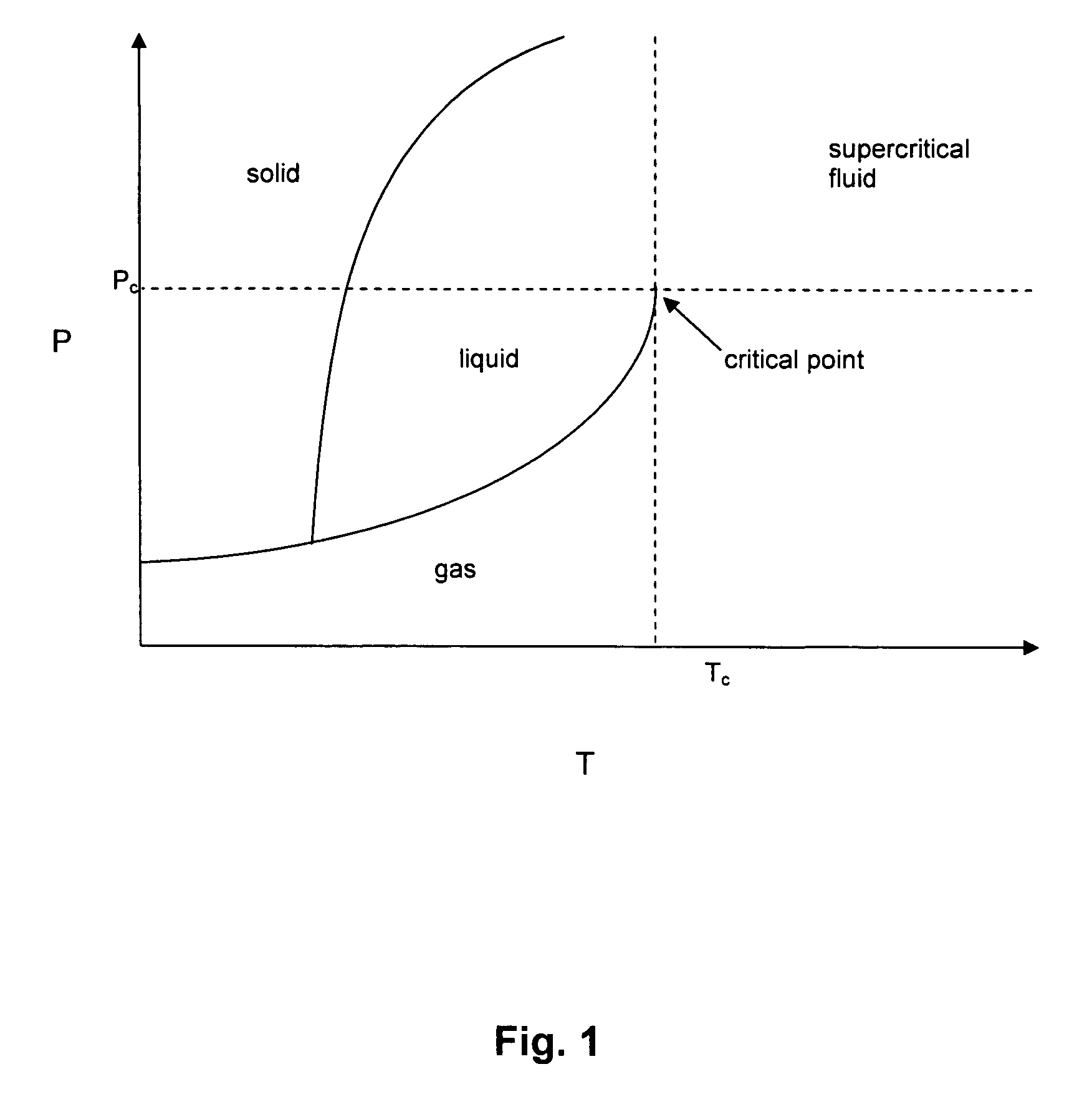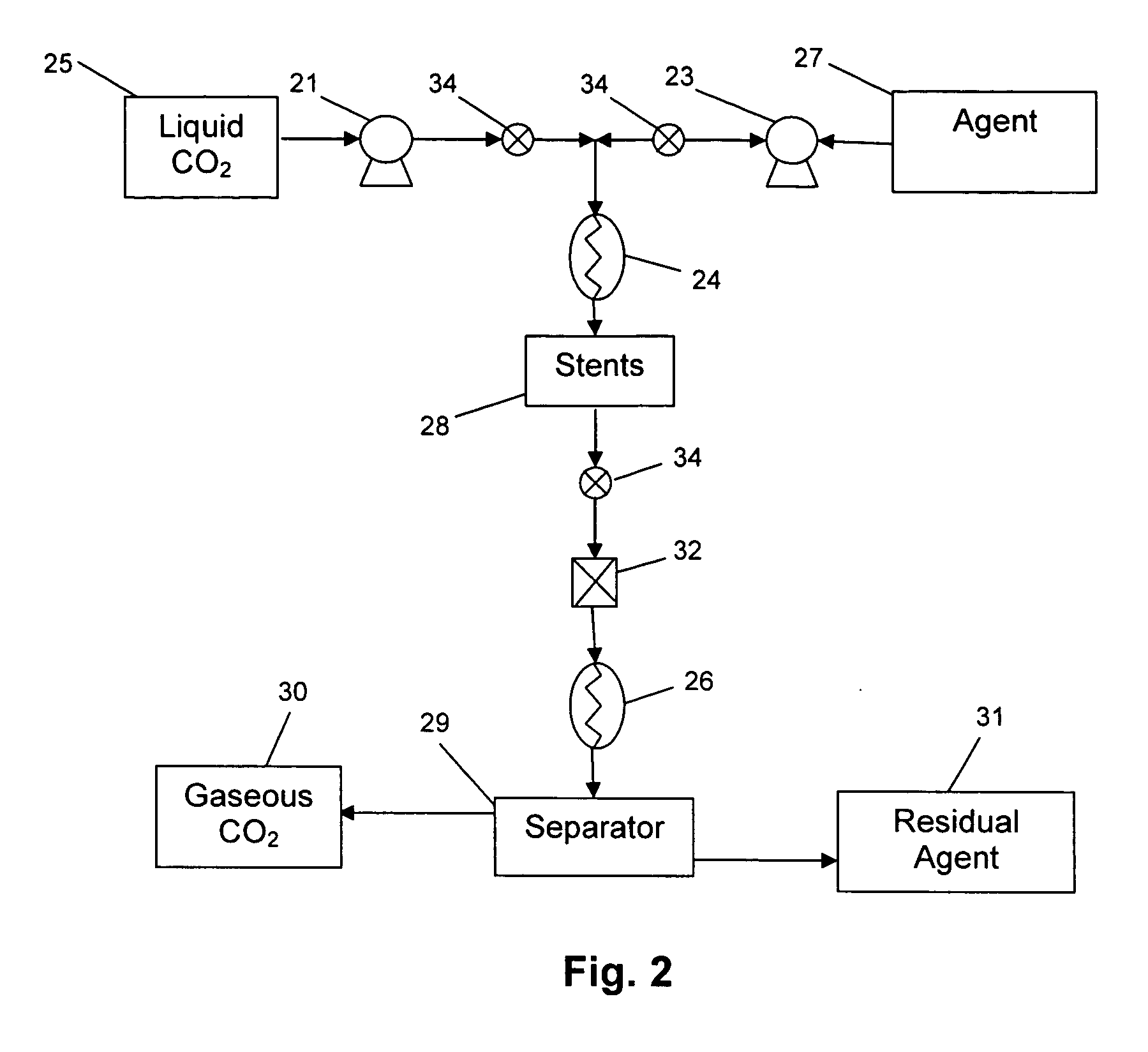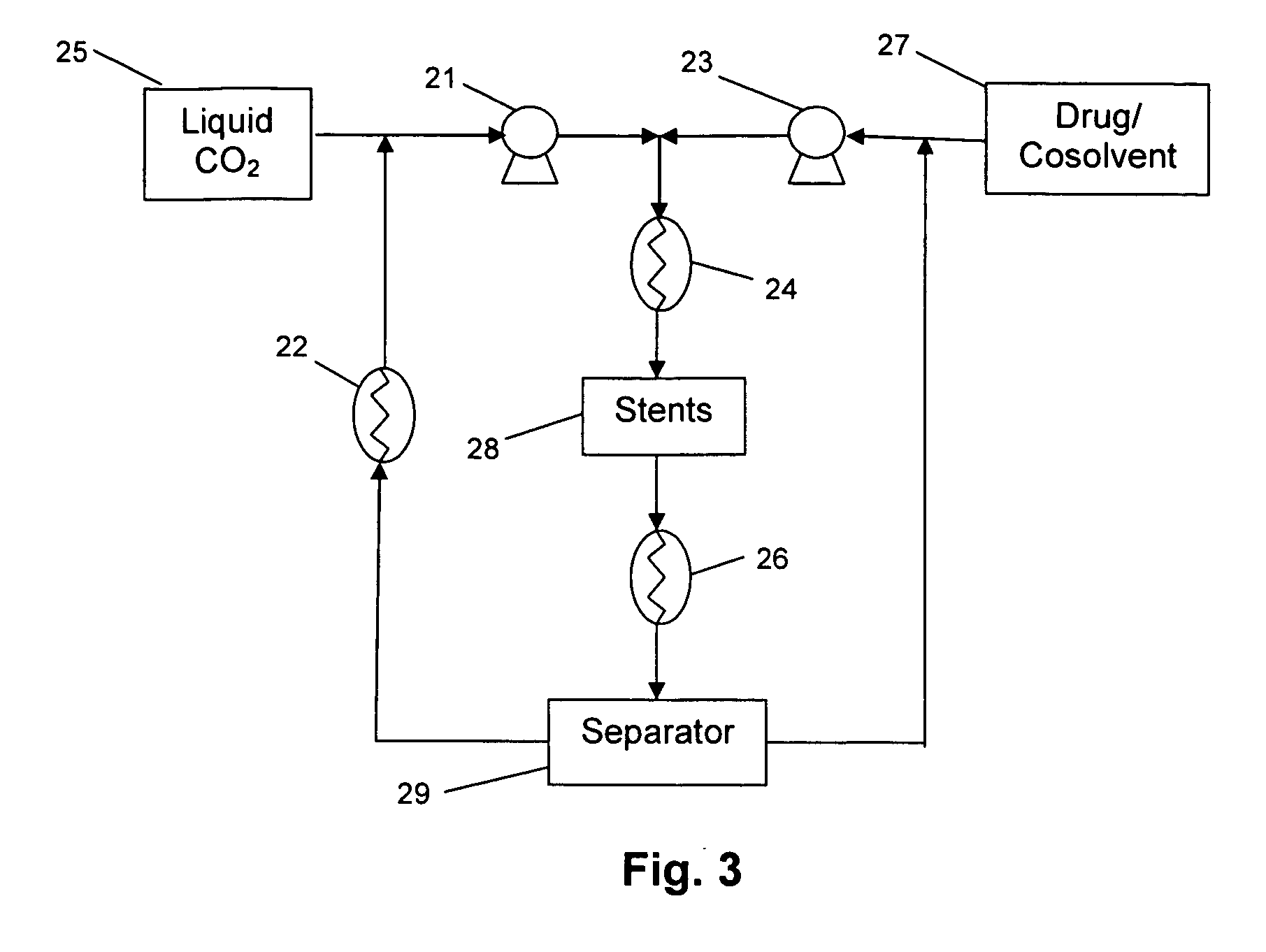Use of supercritical fluids to incorporate biologically active agents into nanoporous medical articles
a technology of biological active agents and supercritical fluids, applied in the direction of prosthesis, blood vessels, impression caps, etc., can solve the problem of inability to meet the requirements of medical devices, and achieve the effects of high compressibility, high viscosity and surface energy
- Summary
- Abstract
- Description
- Claims
- Application Information
AI Technical Summary
Benefits of technology
Problems solved by technology
Method used
Image
Examples
Embodiment Construction
[0021] The present invention is directed to processes for loading medical articles with biologically active agents. In accordance with an embodiment of the present invention, a medical article that comprises a nanoporous surface region, is contacted with a supercritical fluid that comprises a carrier fluid and a biologically active agent. As a result of this contact, biologically active agent is transferred from the supercritical fluid to the nanoporous surface of the medical device.
[0022] A nanoporous surface region is one that comprises a plurality of nanopores (commonly at least 106, 109, 1012 or more nanopores per cm2). A “nanopore,” as the term is used herein, is a surface concavity, indentation, opening or orifice, at least one lateral dimension of which (e.g., the diameter for a cylindrical pore, the length or width for a non-cylindrical pore, etc.) does not exceed 100 nm. A nanopore typically, although not necessarily, has a depth that is greater than its largest lateral su...
PUM
 Login to View More
Login to View More Abstract
Description
Claims
Application Information
 Login to View More
Login to View More - R&D
- Intellectual Property
- Life Sciences
- Materials
- Tech Scout
- Unparalleled Data Quality
- Higher Quality Content
- 60% Fewer Hallucinations
Browse by: Latest US Patents, China's latest patents, Technical Efficacy Thesaurus, Application Domain, Technology Topic, Popular Technical Reports.
© 2025 PatSnap. All rights reserved.Legal|Privacy policy|Modern Slavery Act Transparency Statement|Sitemap|About US| Contact US: help@patsnap.com



